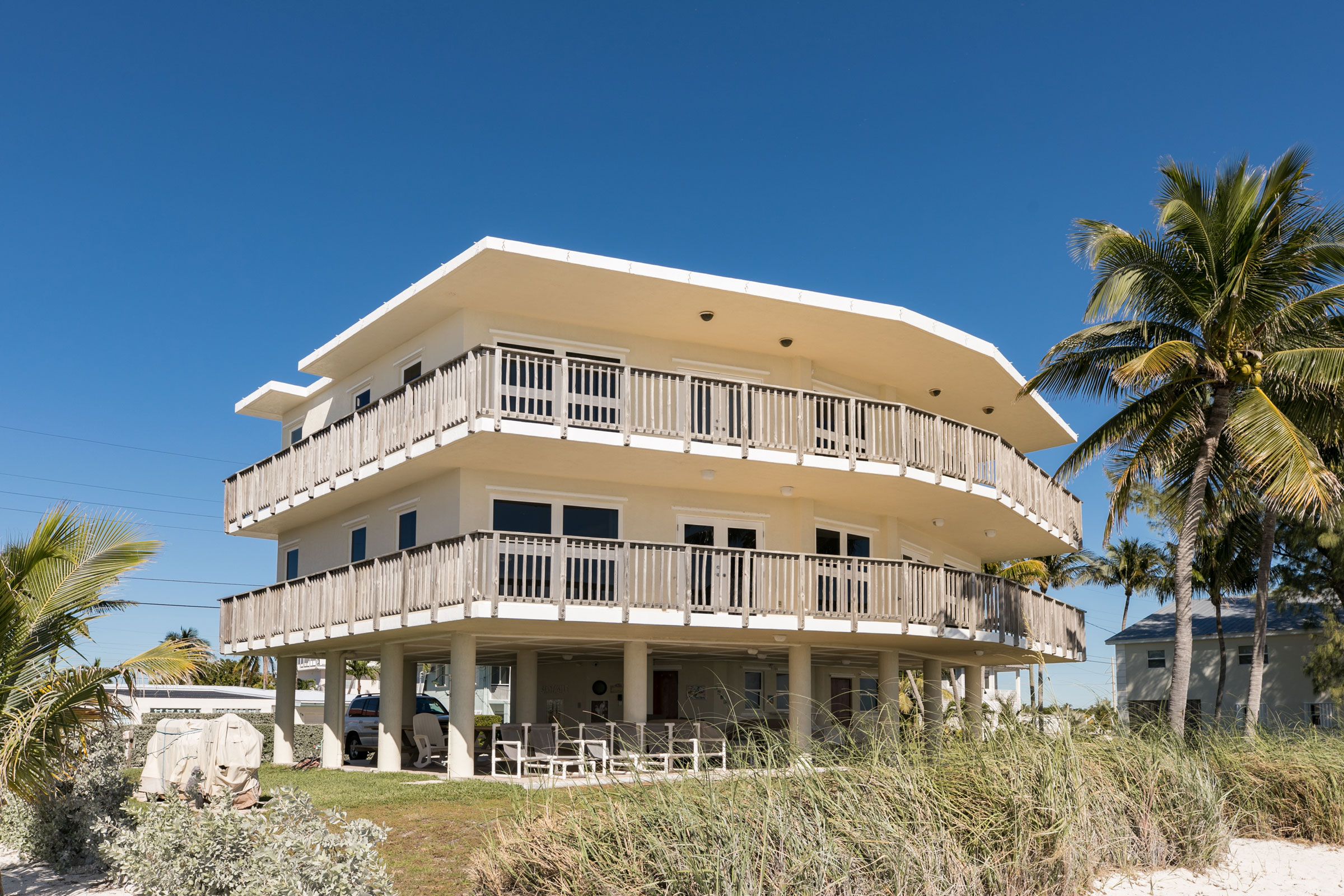Story at a glance:
- 90% of architectural coatings sales in the US are now for environmentally preferable water-based paint and coatings.
- Protective coatings can help restore building facades and reduce urban heat island effect.
- Protective coatings have been recognized by the Cool Roof Rating Council for their energy efficiency.
The global protective coatings market size is expected to reach USD 19.46 billion in 2028 and register a revenue CAGR of 5.5%, according to a report by Reports and Data.
This growth is due in part to the demand from the construction industry. The construction sector is trying to meet the need for infrastructure development across the globe as populations and urbanization continue to rise. As the market demand for protective coatings increases, it’s important to consider the uses and benefits that these materials can bring to projects.
Protective coatings are increasingly utilized for protection against corrosion, ordinary damages, and fire. Coatings can be used to maintain and protect the structures or surfaces long after they’re completed.
Although protective coatings are often known for protecting surfaces from corrosion, that’s not all they can do. There are many types of coatings with various uses. Some coatings may serve to provide waterproofing and concrete surface protection, while others are solar reflective. Here are some of the many benefits protective coatings can offer.
1. They can be sustainable.
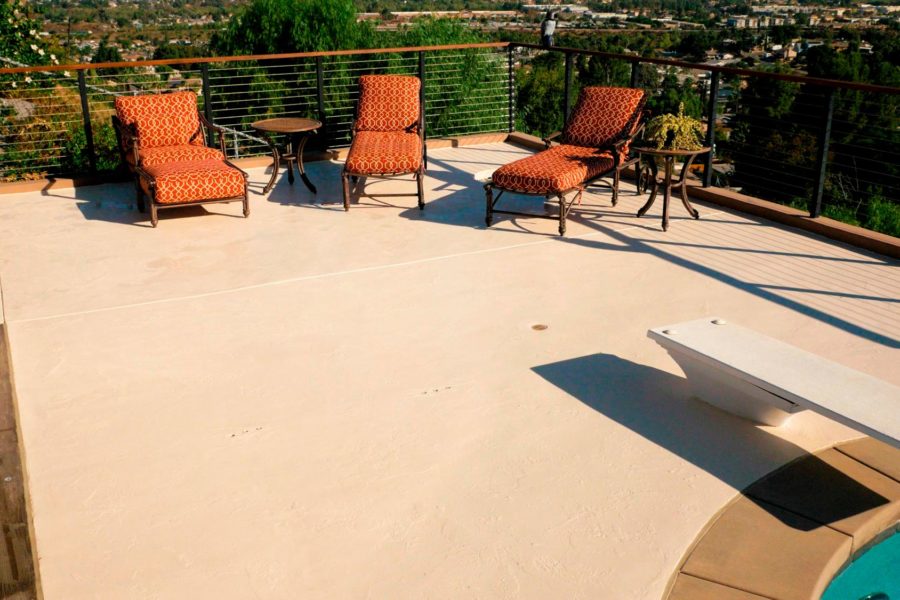
Photo courtesy of Westcoat
The coatings industry has shifted its practices to meet sustainability standards over the last several years. The industry is aiming to address environmental improvements by managing and minimizing toxins and wastes, reducing air emissions, and promoting product and environmental stewardship, according to the American Coatings Association (ACA). Manufacturers like APV Engineered Coatings and Westcoat are examples of industry leaders using innovative technologies, including producing water-based, powder, and ultraviolet cure coatings.
The ACA details several key measurements that highlight the industry’s environmental impact. For example, the industry has reduced its generation of hazardous waste in the US by 34.8% since 2001 per the Resource Conservation and Recovery Act.
Architectural coatings also play a critical role in providing air barriers that are essential for energy-efficient building enclosures, the ACA says. They report that air barriers stop the flow of air through the building, protecting the structure and increasing the efficiency of heating and cooling systems. The ACA says air barriers provided by architectural coatings contribute to the energy efficiency performance requirements found in all green building standards.
Consumers are also driving the industry’s environmental impact, as more than 90% of architectural coatings sales in the US are now for environmentally preferable water-based paint and coatings.
2. They can save energy.
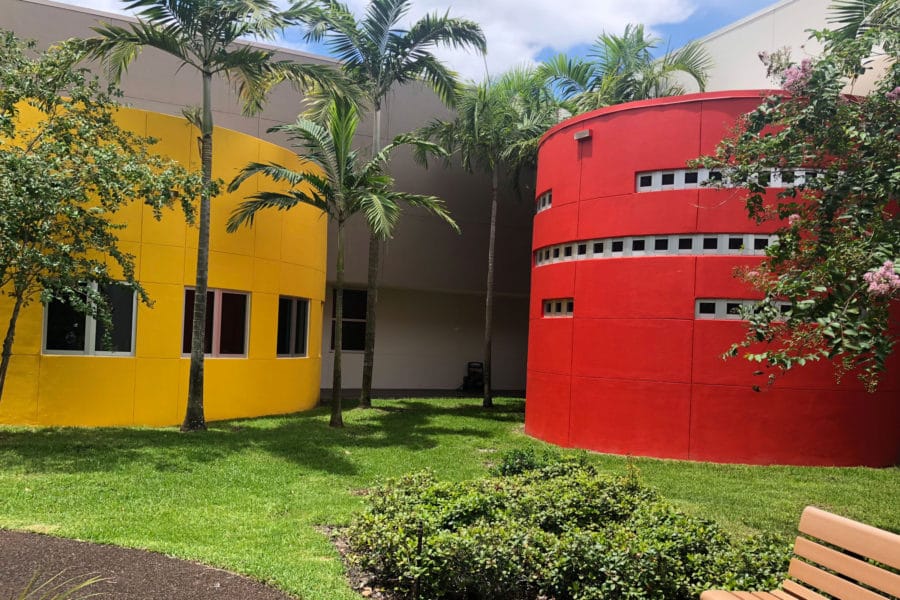
The Jewish Adoption and Family Care Options (JAFCO) center in Sunrise, Florida, maintains its playful facade thanks to NeverFade. Photo courtesy of APV Engineered Coatings
Commercial buildings account for 18% of the country’s primary energy use and 35% of its electricity consumption. The EPA estimates 30% of that energy goes to waste, but protective coatings can help save some of this energy and improve efficiency.
Improved energy efficiency comes with the added bonus of the potential to earn credits toward green building programs such as LEED, the Green Building Initiative’s Green Globes program, and the Living Building Challenge. One way to utilize protective coatings to save energy is through cool walls.
“The science behind cool roofs also can be applied to exterior building wall materials like siding, decking, cladding, and trim. Although exterior walls only receive about half as much sunlight as roofs, a building can have substantially more wall area than roof area, aggravating heat buildup. Several rating and certification organizations are supporting the cool wall trend with new programs,” Lon Bauer, product development manager at APV Engineered Coatings, told gb&d.
The development of cool walls is gaining recognition across the industry. The Cool Roof Rating Council (CRRC) recently expanded its scope and mission to include the rating of exterior wall products in addition to roofing. ASHRAE also recently published an addendum to its 90.1 energy standard for buildings (except low-rise residential buildings) that credits cool-wall energy savings in performance compliance for the standard.
3. They can help restore buildings.
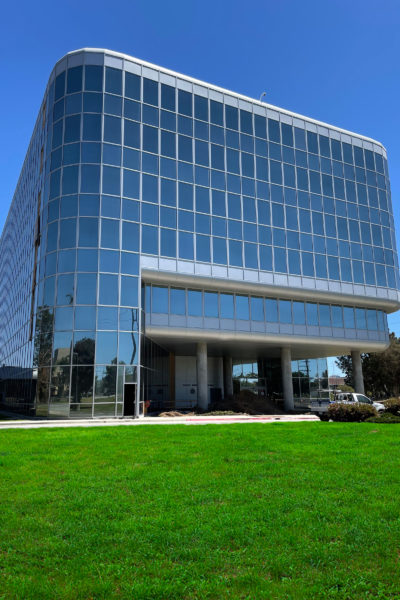
The Historic Federal Aviation Administration’s West Coast Headquarters was fully protected using NeverFade Metal Restoration Coatings system from APV Engineered Coatings. Photo courtesy of Stuart Dean Company
Sun and weather over the years can easily dull the appearance of a once shiny and new building, but restoration coatings can help preserve structures.
One example of how protective coatings can help restore a building can be seen in the former West Coast Headquarters for the Federal Aviation Administration. APV Engineered Coatings’ NeverFade was used to restore the building’s glass and aluminum facade.
“This project was unique and exciting,” says Michael Couchie, APV’s vice president of sales and marketing. “The inspections, scope of the work plan, and execution were challenging but imperative … We were pleased with the outcome and felt privileged to extend the life of this beautiful historic architecture for another 20-plus years.”
The water-based resin is usable on a wide variety of substrates and is extremely durable with a 20-year guarantee from APV. The ultra-low VOC content and water-based nature of APV’s products also means very low odor emission. APV’s NeverFade can be applied by brush or roller, instead of the traditional spray application. This allows for a smoother, cleaner process as nearby cars and buildings are safe from airborne particles.
4. They can extend the life of equipment and buildings.
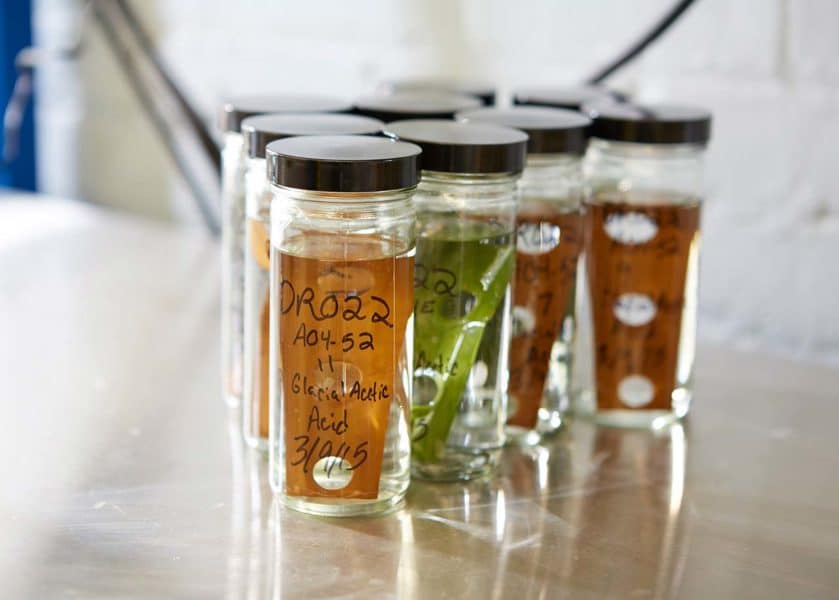
Heresite tests its coatings in all environments, incorporating elements like humidity, UV, and chemical resistance. Photo courtesy of Heresite Protective Coatings
One of the most sustainable benefits of protective coatings is how they can help buildings and equipment last longer.
Heresite Protective Coatings offers HVAC coatings that can extend the life of a variety of equipment. Although certain HVAC-R equipment can have a long life, it’s important to consider the equipment’s operating environment and be prepared for combinations of tough conditions.
“If you have a wastewater plant in proximity to marine or salt air environments, or a refinery or something with potentially corrosive fumes but it also happens to be along the sea, you’re really looking at combined corrosive elements that accelerate the attack,” Peter Hellman, president of Heresite Protective Coatings, previously told gb&d.
Heresite expanded its product line with spray-applied options, following the release of an improved version of its popular full immersion P-413. This thin film, high-performance coating is used for coil and radiator heat exchangers, and it’s the first HVAC-R coil and radiator coating to meet the ISO 12944-9 Standard for severe offshore marine environments. P-413 is an example of how protective coatings can extend the service life of HVAC-R and other heat transfer equipment.
Solar reflective coatings like Westcoat’s Texture-Crete top coat also have helpful benefits, especially when applied to walkways and pool decks. As these coatings reflect sunlight, they actively prevent deterioration from harmful UV rays. Solar reflective systems contain a thin membrane that helps to waterproof its layers and stop leaks, Westcoat says. The less rain, snow, or pool water that gets through, the longer the substrate lasts, according to the San Diego-based manufacturer of concrete coatings and epoxy.
5. They can be used on a variety of surfaces.
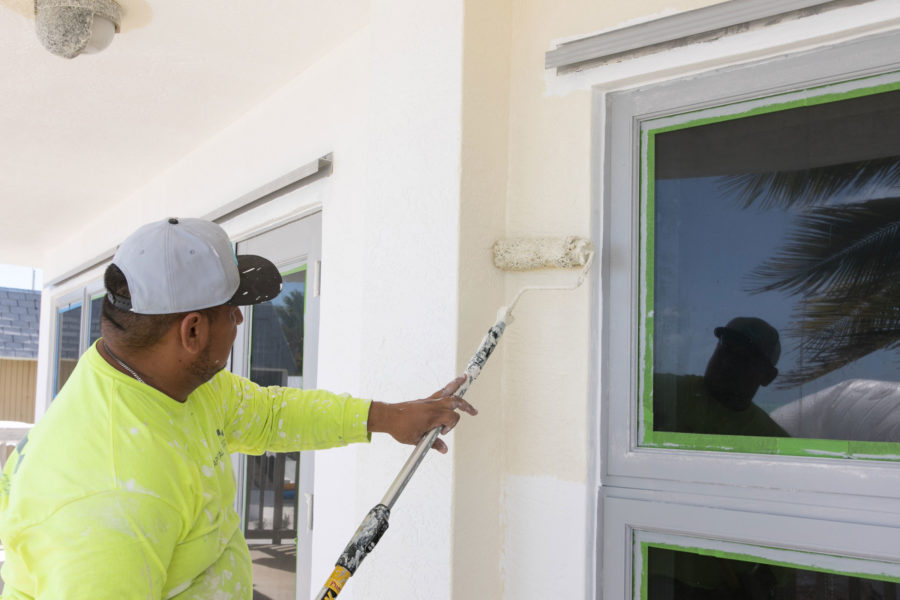
Photo courtesy of APV Engineered Coatings
Coatings like Westcoat’s solar reflective Texture-Crete topcoat can be applied over both solar reflective and non-solar reflective systems. It can also bond to concrete walkways and pool decks without waterproofing systems.
The installation process uses multiple layers of both dark and white cement to adhere to and protect existing structures. This helps to prolong surface life by preventing deterioration from harmful UV rays and waterproofing. Once a base coat and texture coat are applied, a topcoat with infrared pigments is applied to further reflect sunlight.
Kynar Aquatec is another example of coatings that can be used across surfaces. The water-based resin can be applied to a variety of substrates—including metals, plastics, wood, concrete, stucco, EIFS, and previously painted surfaces.
6. They can reduce the heat island effect.

You can combat the urban heat island effect by adding solar reflective coatings to your pool deck or outdoor space. Solar reflective coatings have many benefits, as they cast sunlight and decrease surface temperature. Photo courtesy of Westcoat
Along with helping save energy, protective coatings can help commercial buildings reduce heat island effect.
Urban heat islands (UHIs) happen when trees and other vegetation are replaced with buildings, roads, and other heat-absorbing infrastructure that emit heat and make the outside air warmer. According to the Lawrence Berkeley National Laboratory, UHIs can increase air conditioning energy use, impair air quality by accelerating the formation of smog, and aggravate heat-related and respiratory illnesses.
As urban heat islands take hold and both residential and commercial buildings turn up the AC, there is an increased demand for fossil fuels that emit sulfur dioxide, nitrogen oxides, and carbon monoxide.
Solar reflective coatings can help cool down these urban heat islands by lowering surface temperatures—decreasing the amount of heat the system’s surroundings absorb and re-emit. Solar reflective coatings can be installed in urban outdoor areas with little shade and heavy foot traffic.
Solar reflective coatings’ light-colored, layered cement and infrared pigmented topcoat can also achieve a cool roof rating. The CRRC’s standards for solar reflective roofs and walls call for a particular thermal emittance and Solar Reflective Index. Westcoat’s solar reflective coatings go even further, as all of their systems meet California Title 24 standards, which promote cutting out needless energy consumption in the state’s buildings.
“We are no stranger to sustainability and energy efficiency initiatives,” Mallory Cabading, Westcoat’s architectural representative, told gb&d. “With the addition of the solar reflective series, we can provide a California Title 24, Cool Roof Rated waterproof deck coating solution.”
7. They can protect buildings against harsh weather.

Lead architect John Pistorino used APV NeverFade on the “Sandcastle,” his attempt at a hurricane-proof home. Photo courtesy of APV Engineered Coatings
Some coatings are needed to face the toughest weather, like hurricanes, heavy rain, and extreme heat. One example of this can be seen using APV’s NeverFade and Kynar Aquatec.
Kynar Aquatec is a water-based resin that is ideal for air-dry, field-applied coatings. APV’s NeverFade contains Kynar Aquatec to help protect surfaces from extreme weather. NeverFade was used to hurricane-proof a residence in Florida called the Sandcastle.
“It can be difficult to find an exterior coating that stands up to high humidity, extreme UV rays, and the corrosive power of salt spray for more than five years without fading,” Michael Roberts of Lazer Distribution, a distributor for APV Engineered Coatings, told gb&d. “NeverFade Coatings with Kynar Aquatec has demonstrated 15 years of performance in South Florida with no fading and chalking. I knew the product would be a perfect fit for the Sandcastle.”
APV custom-blends each batch of NeverFade to match the individual customer’s requested shade. In the case of the Sandcastle, APV matched the classic sand-color hue for the home’s stucco. An ultra-bright white was chosen for the home’s polyurethane-covered concrete roof to give it a high total solar reflectance (TSR) value.

